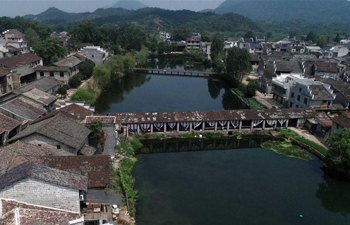CHICAGO, Aug. 26 (Xinhua) -- Researchers at the University of Illinois (UI) have developed a method to break down polyurethane waste and turn it into other useful products, according to a news release posted on UI's website on Monday.
Polyurethanes are made of two components that are hard to break down: isocyanates which are composed of nitrogen, carbon and oxygen; and alcohol groups called polyols.
The polyol is usually petroleum-based and is not degradable. To address this difficulty, the researchers incorporated a more easily degraded chemical unit, an acetal, to the polyol.
Because polyurethanes are water-resistant, the researchers invented an acetal unit that degrades in solvents other than water.
"When we add a combination of trichloroacetic acid and dichloromethane, the material swells and rapidly degrades at room temperature," said Ephraim Morado, a graduate student in the laboratory of UI chemistry professor Steven Zimmerman, who led the research..
The degradation products that are formed can then be repurposed to new materials. For example, the researchers were able to convert elastomers, a type of polyurethane used in rubber bands, packaging and car parts, into an adhesive glue.
"One of the challenges with our approach is that the starting material is costly," said Zimmerman. "We are trying to find a better, cheaper way to accomplish this. Our second hurdle will be to get a patent and find someone who is interested in commercializing it."
The researchers are testing the same technique on other polyurethane materials. They also hope to use milder solvents, such as vinegar, to carry out the degradation.
Polyurethane is used in a wide range of materials including paints, foam mattresses, seat cushions and insulation. These diverse applications generate large amounts of waste.
In the United States alone, 1.3 million tons of polyurethane waste is generated each year.
The waste usually ends up in landfills or is incinerated, a process that requires a large energy input and generates toxic byproducts.

















